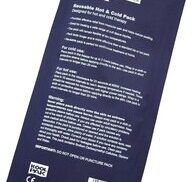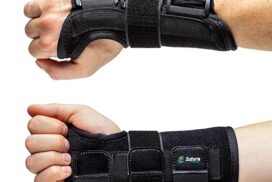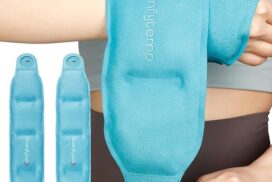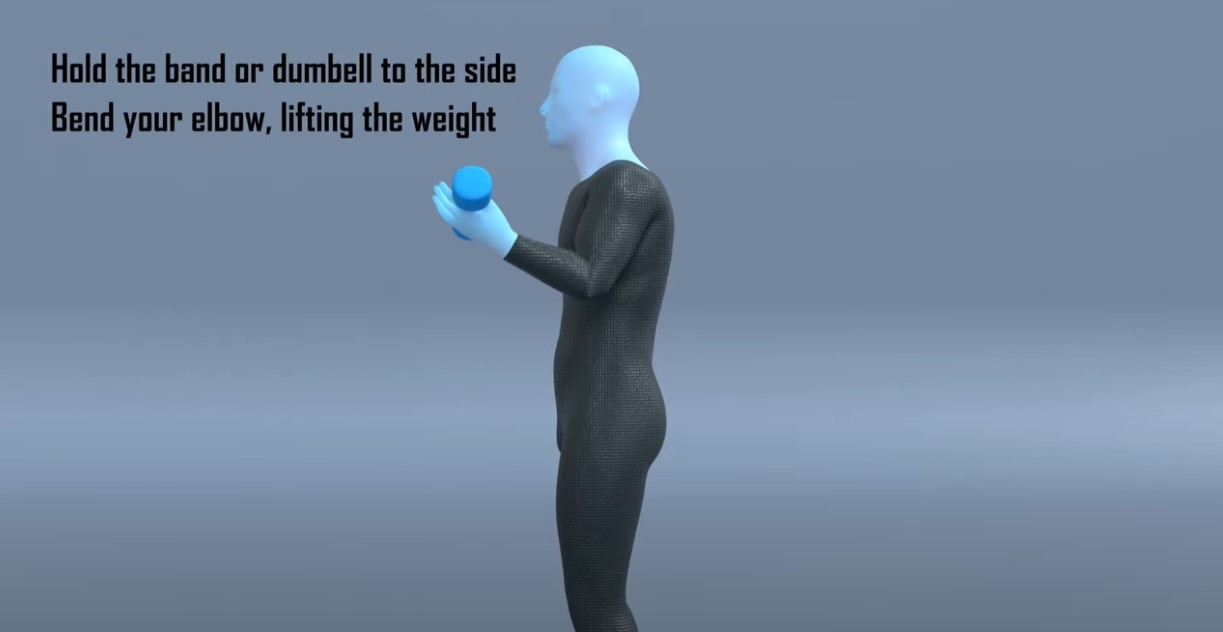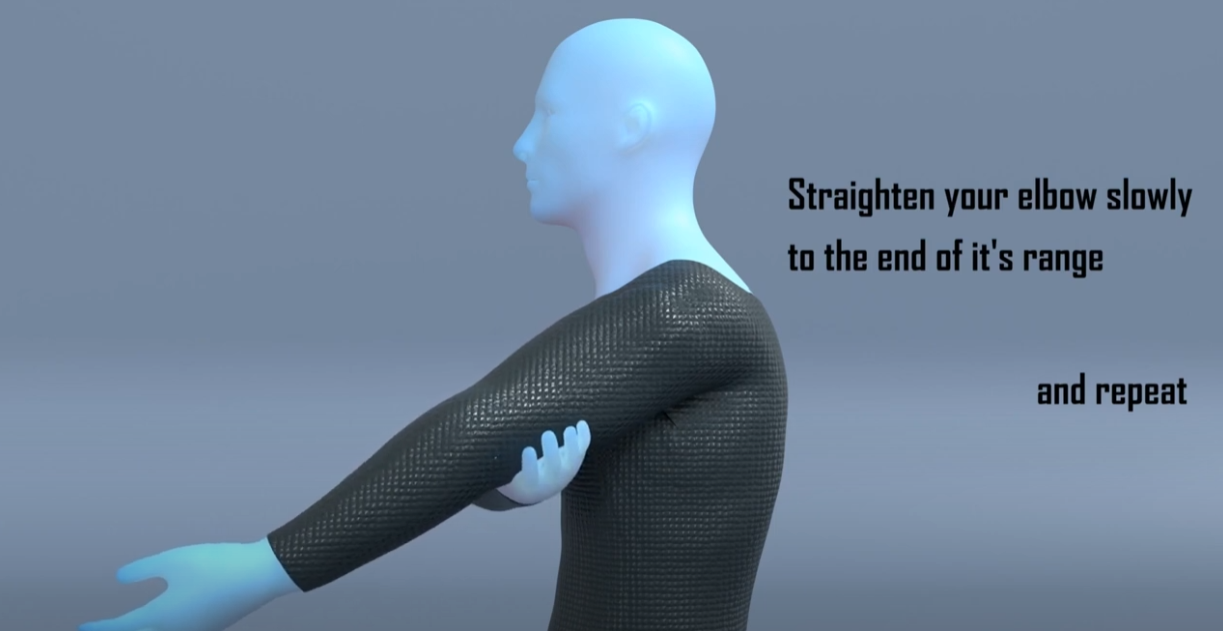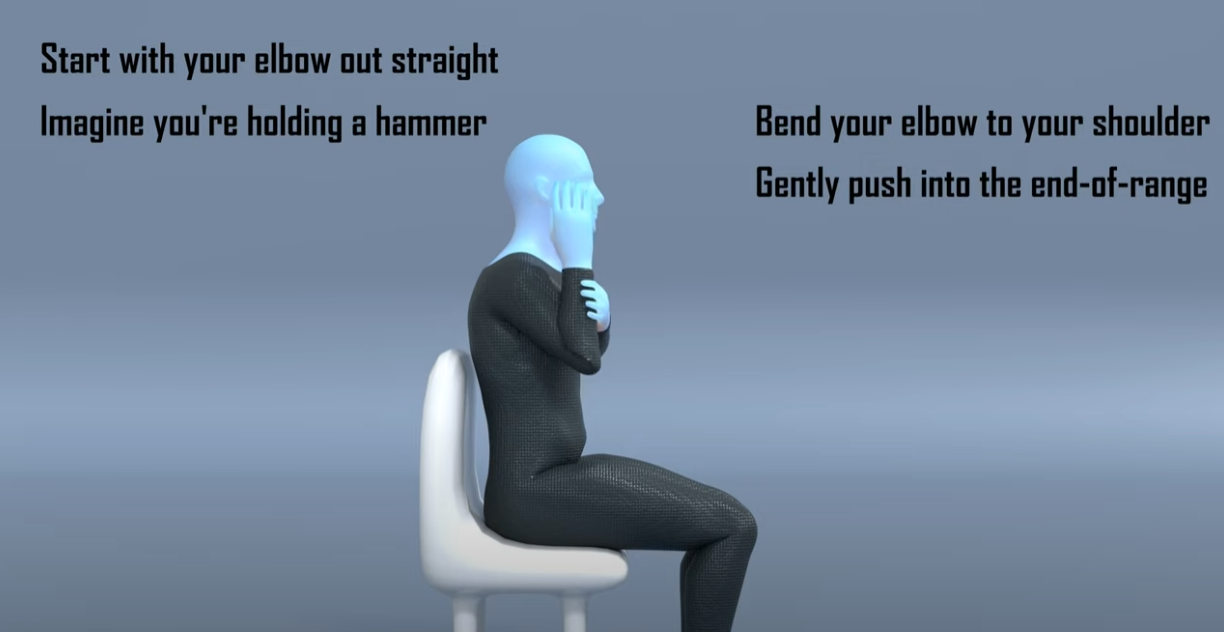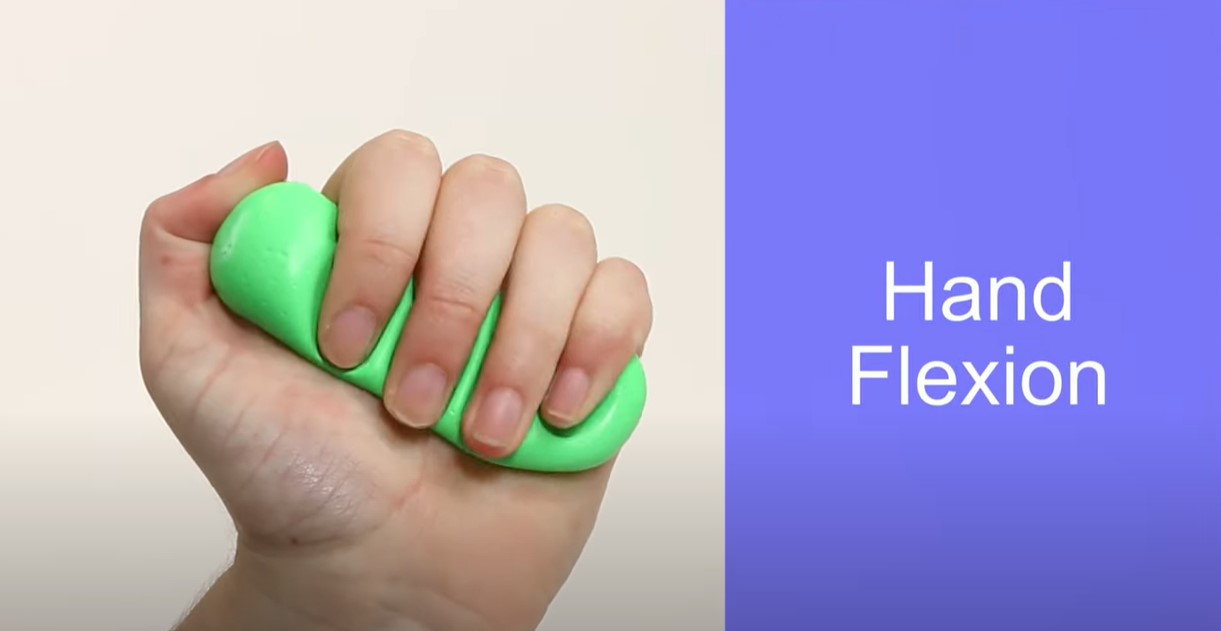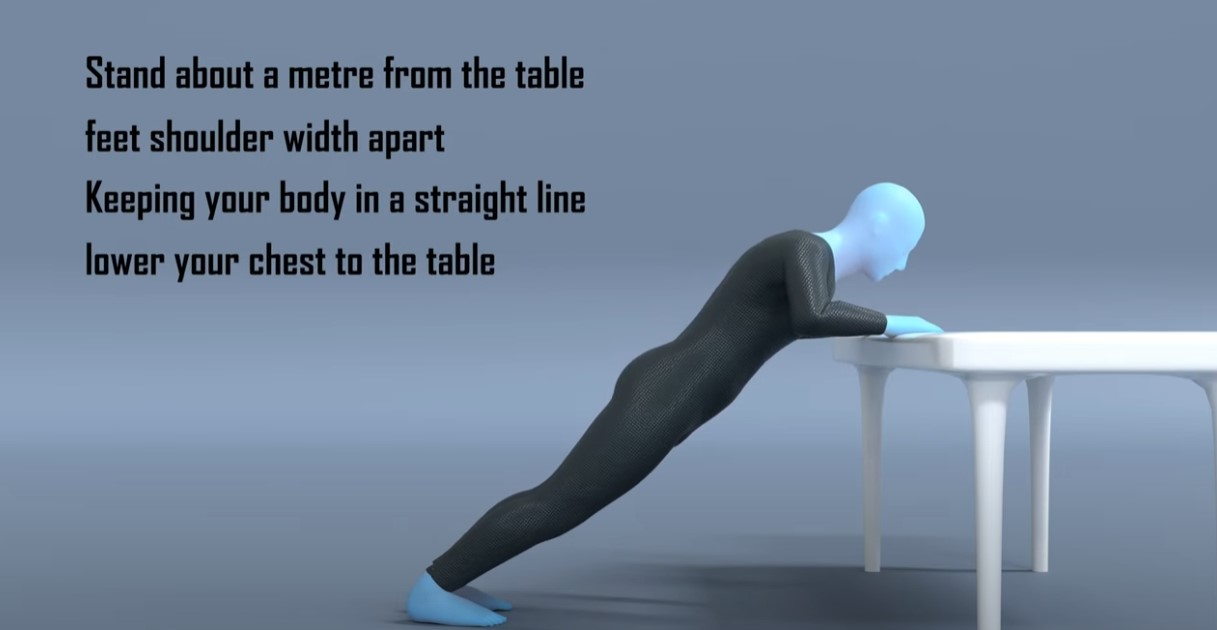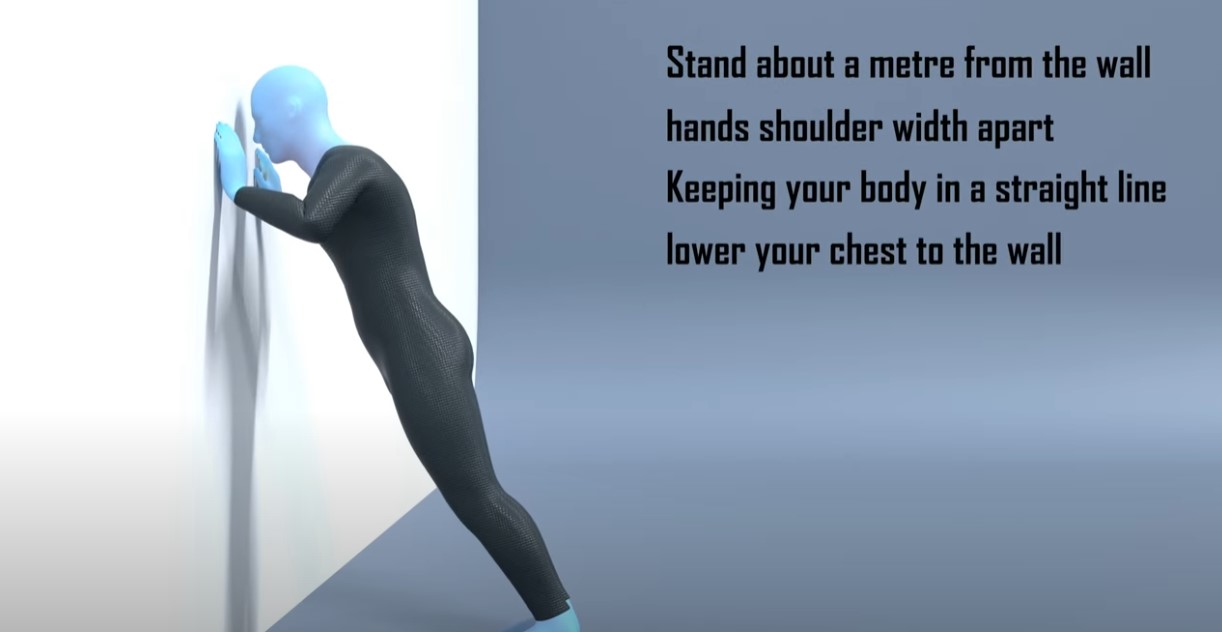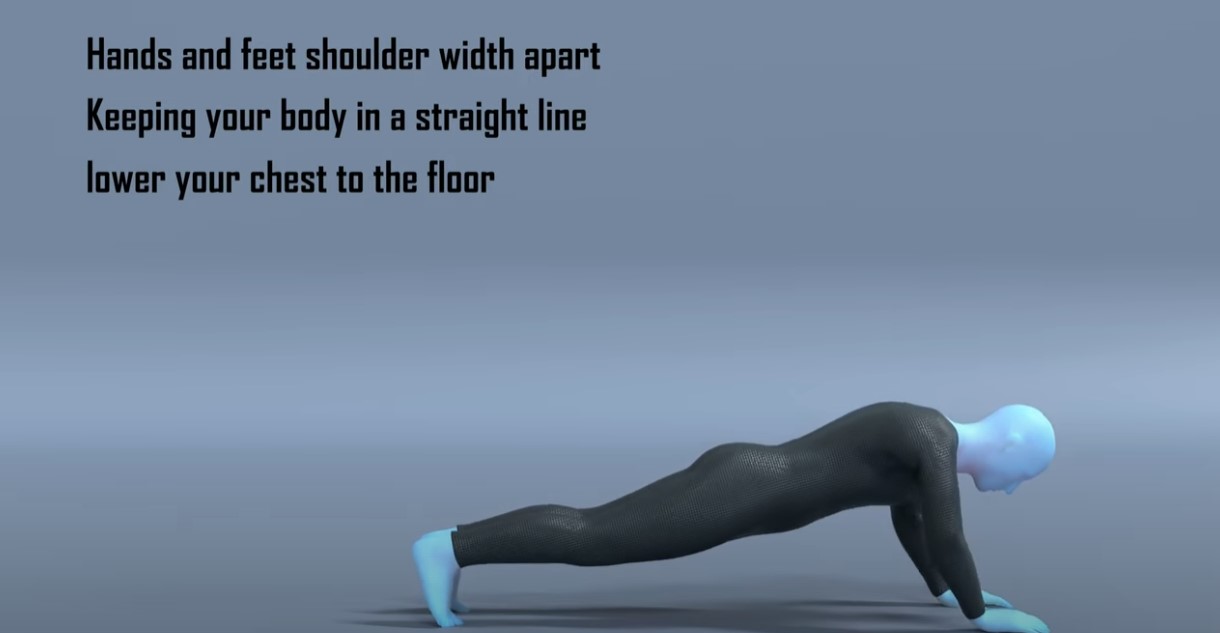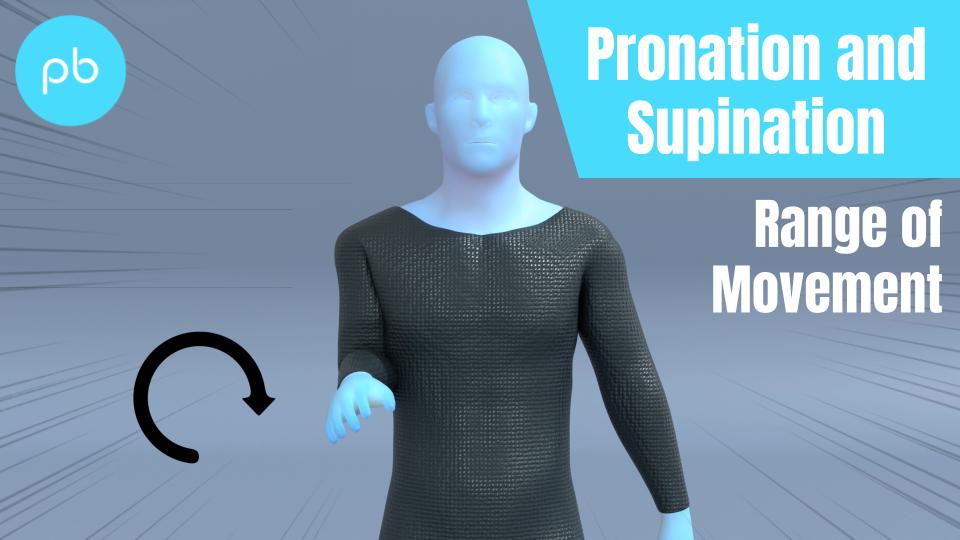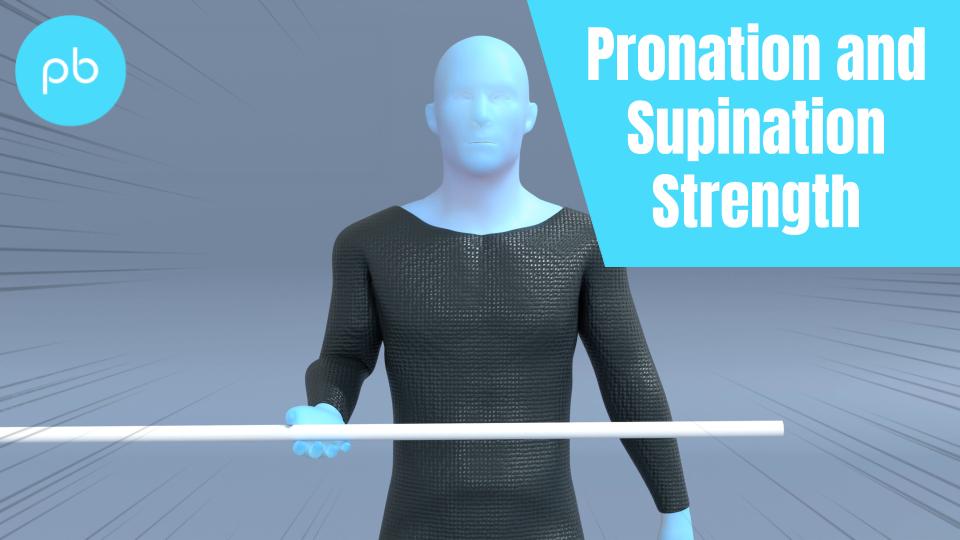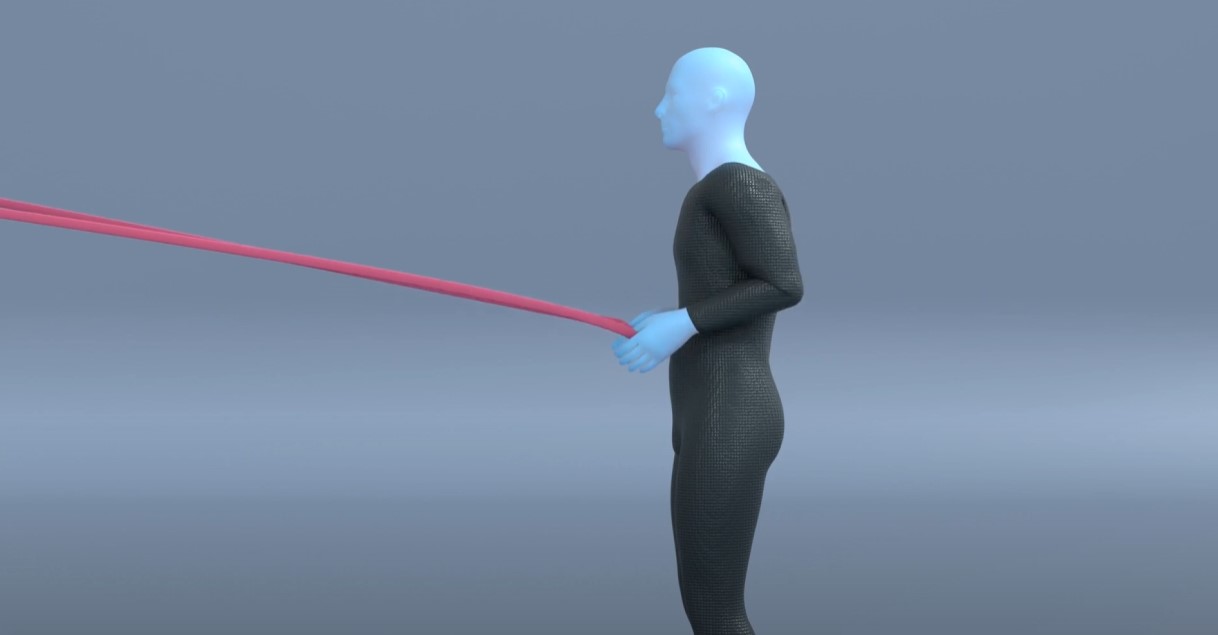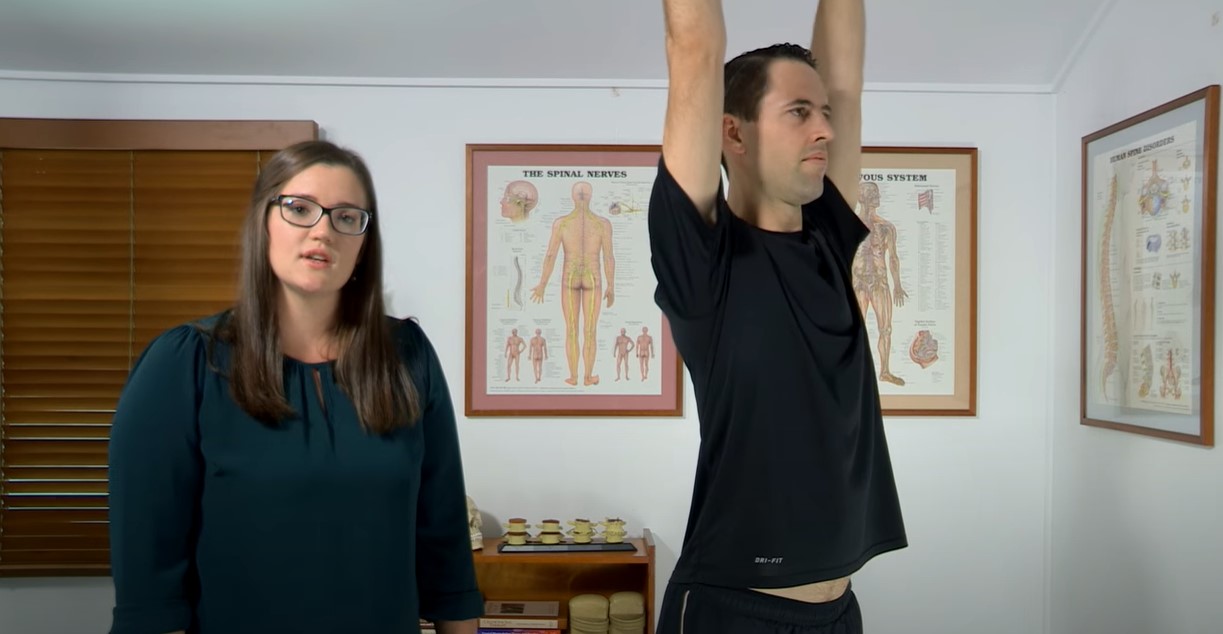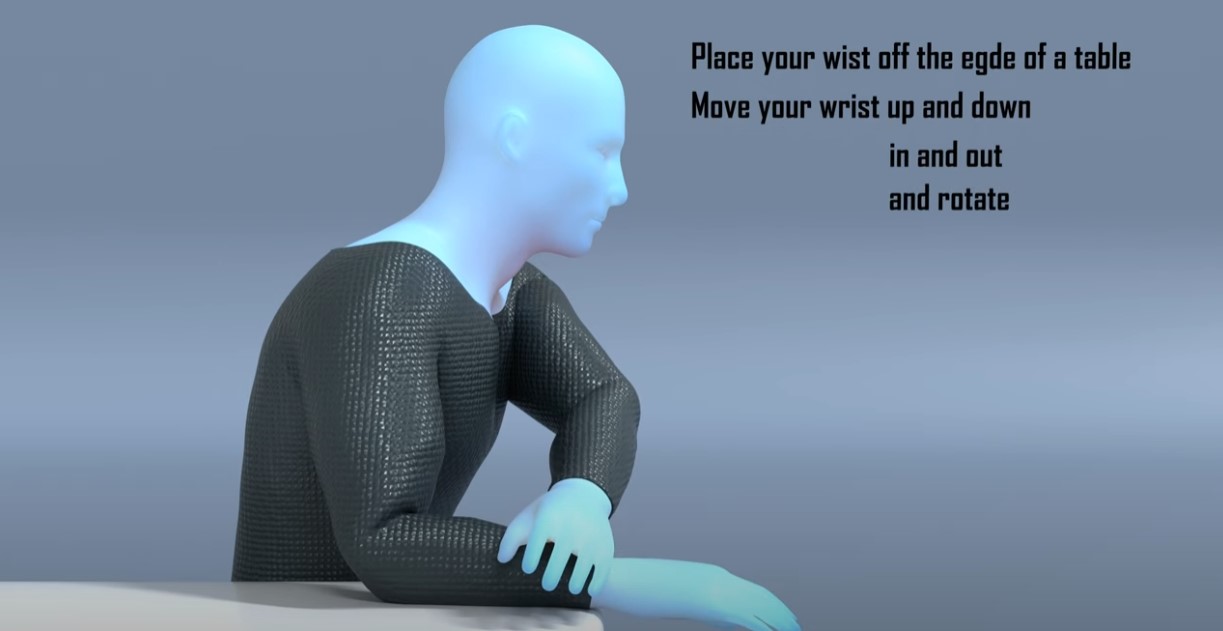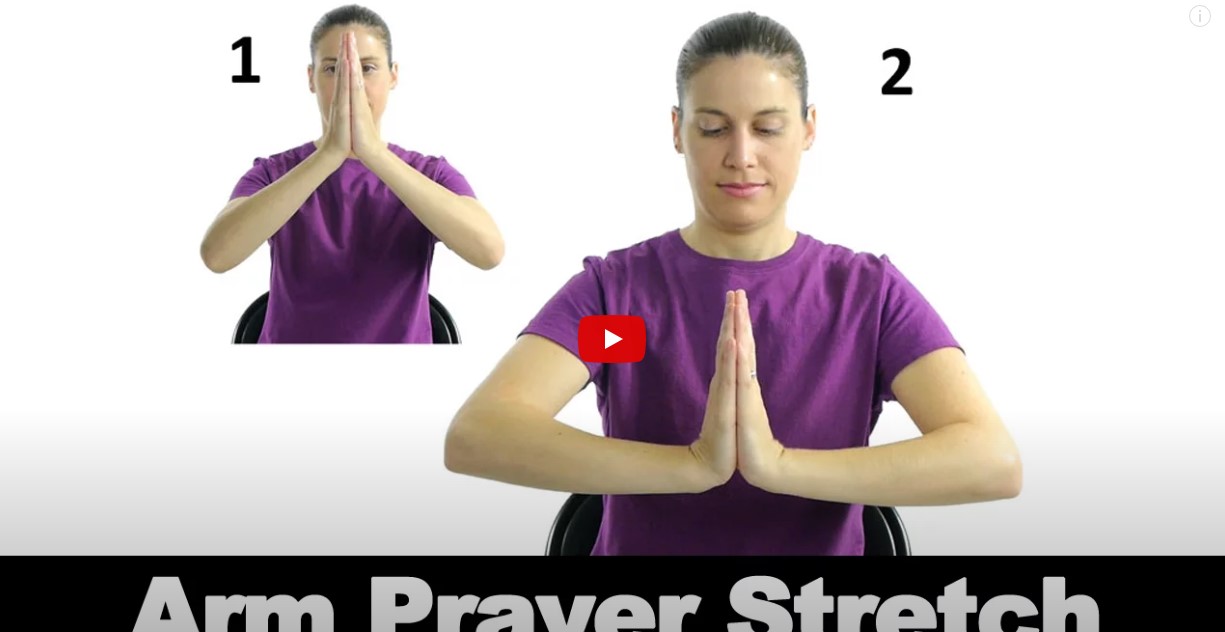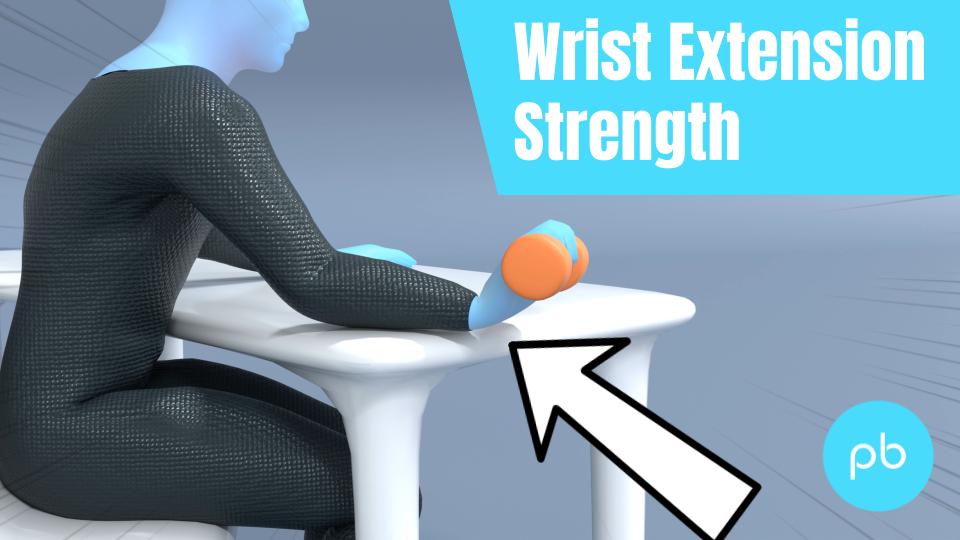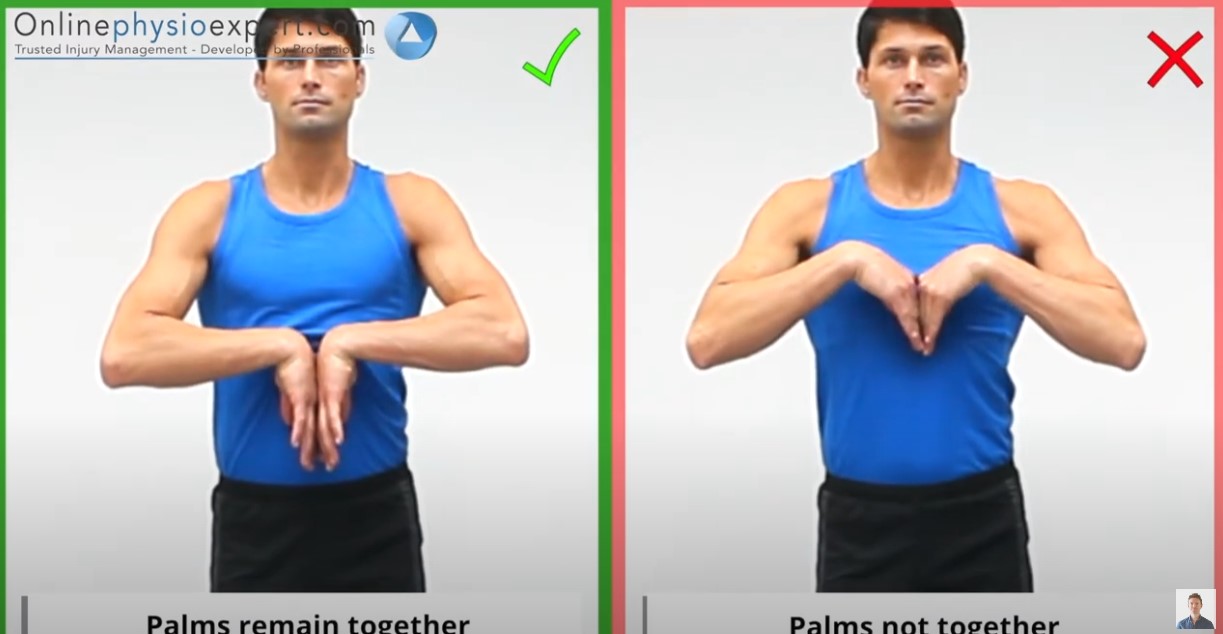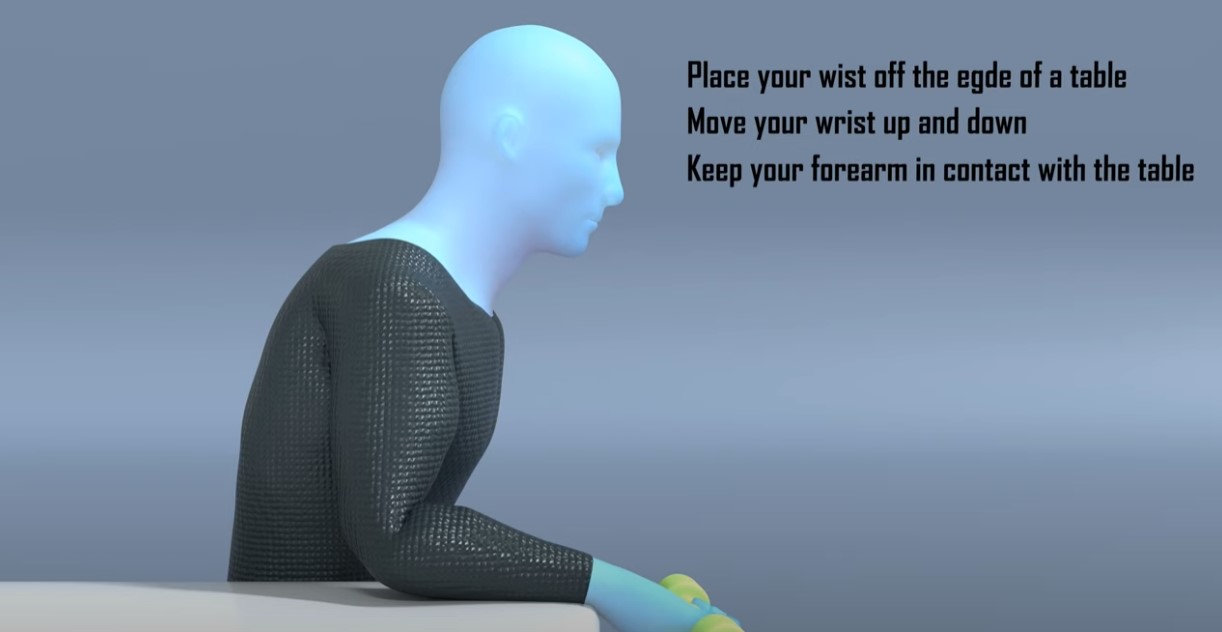
Full Report
Welcome to your free report covering the diagnosis, management and treatment options, exercises and equipment that could help in rehabilitation. Scroll down to read more or use the sidebar icons to skip ahead.
Diagnosis
Wrist Extensor Tendinopathy
There are four wrist extensor muscles in the forearm. They attach from the top of your forearm near your elbow, and then attach to the base of your wrist on the back of your arm to generate the movement of extension and help with gripping. A tendons role is to attach muscle to bone, and then help transfer the energy produced by the muscle into movement. The tendons for these muscles attach onto bones in your wrist and hand. These tendons are very strong and adaptable to the load and activity that they are required to perform. However, if the load or demand they are put under is too high to what they can handle, they will become slightly damaged and cause pain, this is called a tendinopathy. Generally tendinopathies are caused by a change in activity and ultimately load, that the tendon cannot tolerate with, and that it hasn't being able to adapt quick enough to the new demands asked of it. When you have a tendinopathy of your wrist extensors it normally causes discomfort near your elbow where the muscles attach, however in your case it appears to be causing discomfort at the attachments in your wrist.
Your answers highlighted that your symptoms have started at a specific point and most importantly you reported a change in the activities you perform.
With a tendinopathy the important thing to know is that these heal well as long as during the rebuilding phase the load put through the tendon is reduced to an appropriate level. So for example, in the early stage you may need to reduce activities which put the wrist extensors under a high load, such as gripping movements often associated with racquet sports or DIY. Progressively loading the affected area whilst it is healing will help with the rebuilding process, and make sure the strength of your tendons progress as you are healing.
The treatment for tendinopathies, regardless on where they are on the body is fairly straightforward, but requires some patience and discipline. You simply need to reduce the load going through the tendon and give it some time to rest, normally 24-72 hours, and then you need to slowly build the tolerance in that tendon over time following a rehab programme. It's a simple treatment pathway but difficult because it requires some patience to allow time for the tendon to appropriately adapt to the load over time. The important thing is to understand why this was caused. So having a good review of your activity before this injury is helpful so you can avoid making the same mistake again in the future. Initially you want to have a period of relative rest from aggravating activities, this is to allow time for the tendinopathy to heal and if you continued to perform activities which caused pain you would not give the muscles or tendons appropriate time to repair. The next step is to slowly introduce low level strengthening work which is appropriate for your stage of healing, along with reintroducing some basic mobility work to ensure the shoulder movement returns to full.
Wrist extensor tendinopathies can at times be frustrating to repair because we use this muscle group so frequently throughout the day with so many activities, but by managing unnecessary painful activities and following a structured programme the vast majority heal well with a full return to fitness.
Management
Click each phase heading to see the progression of your management programme.
This phase is normally the first 24-72 hours of your symptoms developing.

RICE
RICE stands for Rest, Ice, Compression and Elevation. These steps are helpful for when you have an injury in the acute phase to help reduce pain and assist with the healing process. Depending on your level of function you may not need to do the compression and elevation aspect of this treatment method as it may not offer any benefit, however the others should still offer some help in reducing your symptoms.
Rest: You need to reduce the activity level you are performing and let your body have time to heal. Doing too much initially won’t allow your wrist time to heal as quickly.
Ice: This can help reduce the pain you are experiencing and also reduce some of the swelling. Using some frozen peas wrapped in a damp cloth for 20 minutes will work well here and do this every hour or two. Do not apply the ice directly to your skin, make sure you have a barrier which is preferably damp, and keep an eye out for any ice burns on the skin. If you notice this stop immediately.
What can be helpful here is having a specifically designed ice pack you can reuse over and over again. You still need to have that damp cloth as a barrier with these packs as well.
Compression: This relates to the use of the ice being compressed onto the wrist. This can be achieved by simply wrapping a cloth around your joint, but more bespoke equipment offers this which would be more comfortable and effective, such as a wrist ice pack.
Elevation: Having your elbow rested on an object, with your wrist raised above your shoulder will help reduce any swelling in the area. This may help reduce some of the painful symptoms you are experiencing. Aim here for a similar time frame as applying ice and go for up to 20 minutes. If you are not experiencing any swelling then you can skip this part of the treatment. Do not compress and elevate at the same time, as the volume of fluid returning towards your heart may put too much pressure on it.
Medication
In the initial phase the use of over the counter medication may be an option. Medication such as paracetamol and ibuprofen may allow this acute phase to be more manageable. Please consult your family doctor if you have any concerns with this impacting your current medication, or if any medical history may be impacted by the option of including this medication.

Brace
You may find it helpful to have the support of a basic wrist brace. You should only use this in the first few weeks and aim to wean off the brace gradually so that you don’t become too dependent on it. A brace can help transition as you begin to introduce your normal activities again. You don’t want to be wearing the brace when you are completing the exercises in Phase 2 as it will limit the range of movement you can produce and also reduce the load going through the tendon, which we will need to increase.
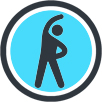
Exercises
The aim of these exercises is to keep the joints above the wrist as mobile as possible, and encourage blood flow to and from the affected arm.
| Exercise | Frequency | |
| Shoulder Flexibility Exercises | 30 seconds x 2 sets | 5 x daily |
| Wrist Active Range of Movement | 30 seconds x 2 sets | 5 x daily |
| Elbow Flexion and Extension Active Range of Movement | 30 seconds x 2 sets | 5 x daily |
You may find it helpful to do these exercises in a circuit type fashion, where you do exercise 1 for 1 set, followed by exercise 2 for 1 set, then exercise 3 for 1 set, follow this pattern until all the movements are completed, and then restarting.
This would be roughly the first 6 - 8 weeks of your recovery.

Education
You may find you want to continue the advice from Phase 1 into this phase as well, which is absolutely fine. During this period the main focus is reducing your pain levels throughout the day and to start loading your wrist extensor tendons progressively.
There are four wrist extensor muscles in the forearm. They attach from the top of your forearm near your elbow, and then attach to the base of your wrist on the back of your arm to generate the movement of extension.
Tendons love load but it needs to be the right level for what they can tolerate for that period of time. You want to reintroduce load to the tendon and progressively load it so it can tolerate more. This ability to tolerate more load will mean you can perform more tasks day-to-day and eventually return to your sporting or daily activity of choice.
Tendons can take up to 12 weeks to repair and in some circumstances longer, depending on the severity and also the individuals specific activities they want to perform. Whilst you are rehabilitating your tendon you need to be cautious not to overload your tendon and cause a spike in pain and also irritation to the tendon. This may result in a backward step and delay in your recovery. Equally important is not loading the tendon enough. It is a balance to create and unfortunately you won’t get it right every time, however as long as you don’t keep getting it wrong, and each week you are loading the tendon more, then you are heading in the right direction.
You will hopefully start to notice that general daily activities become easier as you reduce the load which was aggravating your symptoms and your tendons begin their healing process. Try and avoid the temptation in the start to repeatedly poke and massage the tendons as this could potentially irritate it further.
The next question you need to start asking is “why did this occur?”. This is really important so you can understand what you did to trigger such a reaction. Sometimes this can be really obvious but other times it needs a bit more thinking. If you play a specific sport have you increased the frequency per week of doing this sport, the length of the session, or the intensity of the sessions? Did you recently change any equipment or technique? Equally some basic DIY or home activities can cause tendinopathy, even something as simple as cleaning the car. If you aren’t used to doing the activity and suddenly introduce it into your daily life, your tendons may not have time to adjust to the demands required of them.
The ‘why’ is important so that we can adjust things accordingly when we return to the activity and make sure we don’t repeat the same thing.
You can continue any exercises from the previous phase but you may find they have less value as you progress through your rehabilitation.
A good marker of when to progress from this phase is when you can perform these all with no pain and general daily activities are less discomforting. If you continue to get pain with your daily activities with no improvement in symptoms, progressing on to the next stage where the exercises are harder will most likely only increase your symptoms more.

Exercises
The aim of these exercises is to introduce some basic strength work and to load the wrist extensors without increasing your pain. Remember to start off easy and only increase the intensity each week once the symptoms have settled.
Traditionally with tendinopathy rehab you would perform the exercises eccentrically only. This means you focus on the lowering down portion of the movement, where your tendon is lengthening under load, and to not perform the upwards movement. The evidence on performing the exercise focusing just on the eccentric movement is good, where it has been shown to give better outcomes than doing both the up and down aspects of the movement. However, you do still get a positive change from doing the up and down movements, with the difference minimal in terms of outcome. It is also easier from a coordination point of view to perform, and in our experience people adhere to them more than those who have to do purely eccentric exercises.
So in the programme below if you wish to do eccentric loading wherever you see Wrist Extension Strength you can do, with no change in reps or sets needed. But equally, if you do not wish to or it is too painful, then you can perform the up and down movements of this exercise, and you can be rest assured that you will still get a positive outcome from the programme.
| Exercise | Frequency | |
| Wrist Extension Strength | 30 seconds x 2 sets | 5 x daily |
| Wrist Flexor Strength | 30 - 60 seconds x 2 sets | 5 x daily |
| Elbow Pronation and Supination Active Range of Movement | 30 seconds x 2 sets | 5 x daily |
- For the first exercise use a weight of roughly 0.5kg, which is the same as a 500ml bottle. You can use a dumbbell for this or a water bottle. This will be the main exercise you focus on to load the wrist extensors.
- You should notice that the wrist flexor strength exercise is a lot less irritable and may be able to use a heavier weight.
- For both the first and second exercise you can also use resistance bands if you find it easier and have these available.
- You may find it helpful to do these exercises in a circuit type fashion, where you do exercise 1 for 1 set, followed by exercise 2 for 1 set, then exercise 3 for 1 set, and then restarting.

Medication
In this phase you want to continue with any pain medications that are appropriate so that if you are experiencing any pain you are still able to do your rehab exercises, and also maintain a good level of quality sleep, however the general usage of the pain medication should be reduced as you move through the phase. By the end of this phase you should not be reliant on pain medication to get you through the day or to perform the exercises.

Brace
During the phase you should be weaning yourself off the brace reducing its usage throughout the day. By the end of this Phase you should not be reliant on the brace and be able to perform the exercises with ease.

Symptoms
During this phase you should start noticing more times in the day when you are pain free, however it is not uncommon for there to be sharp spikes in pain if you are doing a specific activity. This will improve and the activities which cause irritation should become less. If you continue to perform activities which consistently aggravate the wrist, it will continue to cause you pain and perhaps be affecting the end stage of healing. You need to alter the activities in some manner that are causing irritation until you have moved further along in your healing.
If you are struggling to wean off medication or perform the exercises, by the end of this phase it may be helpful to be reviewed by a medical professional to ensure you are on the right path. If however you are improving and there has been significant improvement since you started the programme, this won’t be necessary.
During the rehabilitation programme you may find that specific exercises or activities of daily life aggravate the tendon and you become sore for a couple of hours after. This is ok as long as the pain is below 5/10 on the pain scale, and as long as it settles within 2-3 hours. If you are sore for the rest of the day, or particularly sore and struggle with gripping activities the next morning this means you have done too much for the tendon to cope with at this stage. When it becomes irritable and painful like this, sometimes applying the treatment options and exercises in Phase 1 may be helpful. It's important that you don’t keep repeating activities which result in a spike in pain as this will prolong your recovery.
Pacing
At this stage you should find you can do more day-to-day activities pain free. The temptation here is to go a bit overboard. A nice reminder to pace activities so that you don’t over do it, and that you spread these activities out as much as possible throughout the day.
In this phase we are looking between 6 to 12 weeks following the injury.

Education
Similar to Phase 2 the timelines here are merely a guideline and may vary depending on the severity of your sprain.
The aim of Phase 3 is to increase the strength exercises to the arm along with ensuring the range of motion is full. You should continue the two wrist mobility exercises from the previous phase making sure you get full range in all directions of the wrist joint.
You should notice that you are becoming less restricted in the day and able to perform more daily activities with ease. Your soft tissue structures are still healing during this period as well.
A good marker of when to progress from this stage is when the strength exercises are easy to perform, are almost equal on both sides and do not cause pain.

Exercises
| Exercise | Frequency | |
| Wrist Extension Strength | 60 seconds x 3 sets | 3 x daily |
| Wrist Extension Prayer Stretch | 60 seconds x 3 sets | 3 x daily |
| Pronation and Supination Strength | 60 seconds x 3 sets | 3 x daily |
| Grip Strength | 60 seconds x 3 sets | 3 x daily |
| Wrist Flexion Reverse Prayer Stretch | 60 seconds x 3 sets | 3 x daily |
Some points to consider with the exercises:
- The first exercise is continued from Phase 2 but with a longer duration.
- For the Prayer Stretch exercises start this slowly and increase the range of motion over time, you would expect this exercise to be discomforting to start with initially as you haven’t moved your wrist this far for a number of weeks.
- For the grip strength exercise start off with the lightest putty or stress ball on the grip strength exercise. You may find that towards the end of the Phase you can introduce a Gyroball as a way to challenge you further, along with offering a more entertaining way to strengthen your forearm. This will also work your wrist extensors so be cautious not to overdo things initially.
- You may find it helpful to do these exercises in a circuit type fashion, where you do exercise 1 for 1 set, followed by exercise 2 for 1 set, then exercise 3 for 1 set, followed by exercise 4 for 1 set, and then restarting.

Symptoms
You should in this stage not be noticing your wrist pain with daily activities but perhaps with specific hobbies or work based tasks which require a lot of gripping. This will improve and hopefully by the end will be less limiting.
This final phase is from the 3 month mark onwards. Your wrist will still be progressing during this time and may require this long depending on your goal.
When you start Phase 4 you want to have achieved a full range of movement, and at least 90% strength compared to the other side along with the grip strength exercises not too challenging. For some people there may not be any requirement to perform these exercises, however if you intend to return to sport it may be helpful.
You may find continuing the exercises from Phase 3 helpful, especially if there are any movements which remain weak, but if the range is full there would be no need to continue the mobility exercises.
The main focus on Phase 4 is to introduce some general upper limb strength work along with introducing some weight bearing exercises.

Exercises
| Exercise | Frequency | |
| Press ups (on a wall, table or floor) | 8-15 reps x 4 sets | 2 x daily |
| Bicep Curls | 8-15 reps x 4 sets | 2 x daily |
| Resistance Band Rows | 15-20 reps x 4 sets | 2 x daily |
Some points to consider with the exercises:
- On the press ups start with the easiest option and then progress upwards after 1 week. If you struggle with the Prayer Stretch from the previous phase then you should not try to press ups just yet, as the extra weight through your joint without having full range will be too tough initially.
- For the bicep curls you can use dumbbells or resistance bands.
- With all three exercises vary the position you have your wrist to offer some variation.
- Aim to do two consecutive days on the same intensity before increasing the difficulty, and only increase the difficulty by roughly 10%.
- As you are able to tolerate more weight or resistance you can reduce the repetitions on each of these exercises.
- You may find it helpful to do these exercises in a circuit type fashion, where you do exercise 1 for 1 set, followed by exercise 2 for 1 set, then exercise 3 for 1 set, and then restarting.

Return to Sport or Activity
As a general rule, try and aim for two pain-free sessions at a reduced duration or intensity before increasing.
For example, if you normally play 60 minutes of tennis, aim to play for 30 minutes in a non-competitive environment for two non-consecutive days.
Having a day's rest between sessions allows you to have appropriate rest and for your body to repair and become stronger.
Once you have found a duration or intensity you can tolerate with no flare up, aim to increase the next session by 10%. This can seem like a slow and conservative process however the research has shown this is the optimum level of increase to avoid an overuse injury. Increasing duration or intensity by more than 10% significantly increases your chance of injury. As you will have been away from your sport for a number of months, you will have lost some of your fitness conditioning in this time and will need to build this up slowly.
Over time you will be able to slowly return to your pre-injury level of activity without regressing back to any acute flare-up.



